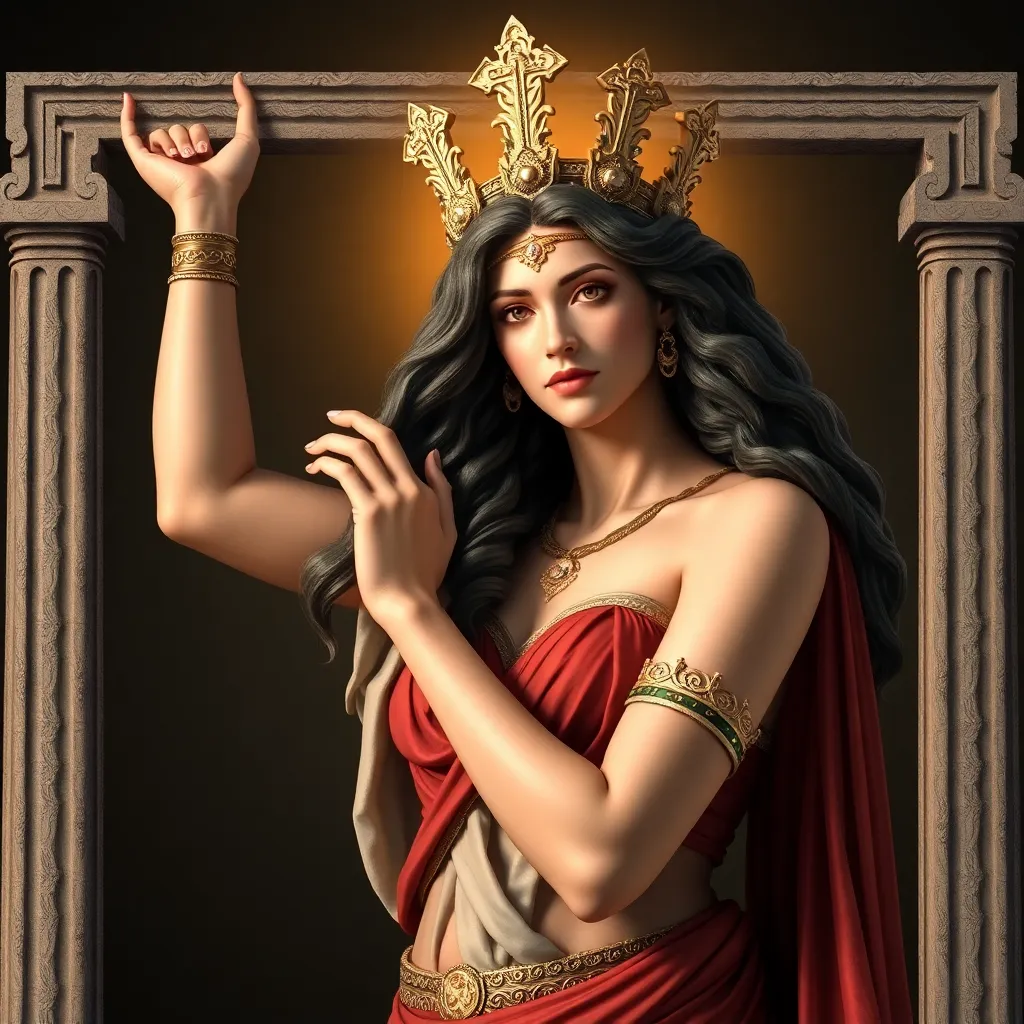The Role of Hera in Greek Mythology: Queen of the Gods
I. Introduction
Greek mythology is a rich tapestry of gods, goddesses, heroes, and mythical creatures, each playing a significant role in the spiritual and cultural life of ancient Greece. Among these divine figures, Hera holds a prominent position as the Queen of the Gods. As the wife of Zeus and the goddess of marriage and family, Hera’s influence permeates various facets of Greek mythology and society. This article aims to explore Hera’s origins, her complex relationship with Zeus, her role as a goddess, and her lasting legacy in both ancient and modern culture.
II. Hera’s Origins and Birth
Hera was born to the Titans Cronus and Rhea, making her one of the original Olympian deities. As a child of the Titans, she is part of a lineage that includes powerful figures like Zeus, Poseidon, and Hades. Hera’s birth is significant as it symbolizes the transition from the rule of the Titans to the Olympians. The following points highlight her familial relationships:
- She is the sister of Zeus, Poseidon, Hades, Demeter, and Hestia.
- Her marriage to Zeus places her at the center of the Olympian hierarchy.
- Hera’s strong ties with other goddesses and her role in their narratives further establish her importance.
Hera’s relationship with her siblings and her eventual marriage to Zeus are crucial in understanding her character and her role in Greek mythology.
III. Hera’s Marriage to Zeus
The union between Hera and Zeus is both a romantic and tumultuous story. According to myth, Zeus fell in love with Hera and pursued her relentlessly. After transforming into a peacock to entice her, Hera eventually agreed to marry him. However, their marriage is marked by conflict, primarily due to Zeus’s numerous infidelities. The dynamics of their relationship can be summarized as follows:
- Hera often sought revenge on Zeus’s lovers and their offspring, showcasing her fierce protectiveness over her marriage.
- Despite the challenges, Hera remained a powerful figure, often exerting her influence over Zeus and the other gods.
- Their marriage is a reflection of the complexities of love, power, and jealousy in ancient Greek society.
This tumultuous relationship not only affects the gods but also has significant repercussions for mortals, as Hera often intervened in their lives, especially in matters of marriage and family.
IV. Hera’s Role as the Goddess of Marriage and Family
Hera is primarily revered as the goddess of marriage and family, embodying the ideals and values associated with these institutions in ancient Greece. Her symbolism is deeply intertwined with the concept of marital fidelity and the sanctity of family life. The following points illustrate her attributes and representations:
- Hera is often depicted wearing a diadem, symbolizing her status as queen.
- She is associated with the peacock, a symbol of beauty and majesty.
- Her role as a protector of women and marriage is evident in various myths, where she advocates for the rights of married women.
As the goddess of marriage, Hera’s influence extends beyond the divine realm, impacting the cultural practices and beliefs surrounding marriage and family among the ancient Greeks.
V. Hera’s Role in Mythological Narratives
Hera’s character is prominently featured in numerous myths, showcasing her interactions with gods, heroes, and mortals. Some key narratives include:
- The Trojan War, where Hera played a crucial role in manipulating events to favor the Greeks.
- The story of Heracles, her stepson, whom she persecuted due to her jealousy of Zeus’s affair with Alcmene.
- Her rivalry with other goddesses, like Aphrodite, highlights her fierce nature and protective instincts.
These myths illustrate the complexity of Hera’s character, showcasing her as both a nurturing figure and a vengeful goddess. Her development through these stories reflects the multifaceted nature of women in mythology and society.
VI. Hera’s Attributes and Symbols
Throughout ancient art and literature, various symbols and attributes are associated with Hera, reinforcing her identity as the Queen of the Gods. Common symbols include:
- The peacock, representing beauty and pride.
- The pomegranate, symbolizing fertility and abundance.
- The cow, which signifies her nurturing aspect.
Artistic representations of Hera often depict her in regal attire, emphasizing her status and authority. The cultural significance of her symbols extends into various aspects of Greek life, from marriage ceremonies to artistic expressions.
VII. Hera’s Worship and Cult
Hera was widely worshipped throughout ancient Greece, with numerous temples and places of worship dedicated to her. Key aspects of her worship include:
- Temples such as the Heraion of Argos, which served as a major center for her cult.
- Festivals like the Heraia, held in her honor, featuring athletic competitions for women.
- The evolution of her worship over time, reflecting changes in societal values regarding marriage and gender roles.
Hera’s worship not only illustrates her importance within the pantheon but also highlights the societal values of fidelity and the sanctity of marriage.
VIII. Conclusion
Hera’s multifaceted role in Greek mythology reveals her significance as the Queen of the Gods. From her origins and complex marriage to her influence on marriage and family life, Hera embodies the ideals and struggles of women in ancient society. Her legacy continues to resonate in modern culture, where themes of jealousy, loyalty, and the complexities of relationships remain relevant. Ultimately, Hera stands as a powerful figure, representing both the strength and vulnerability of women, ensuring her place in the annals of mythology.




